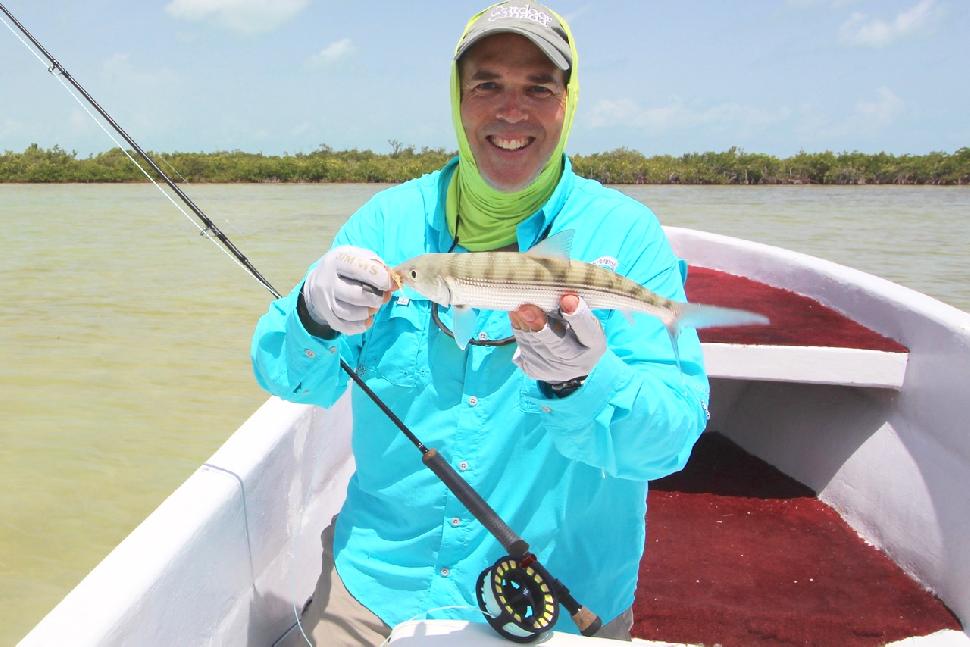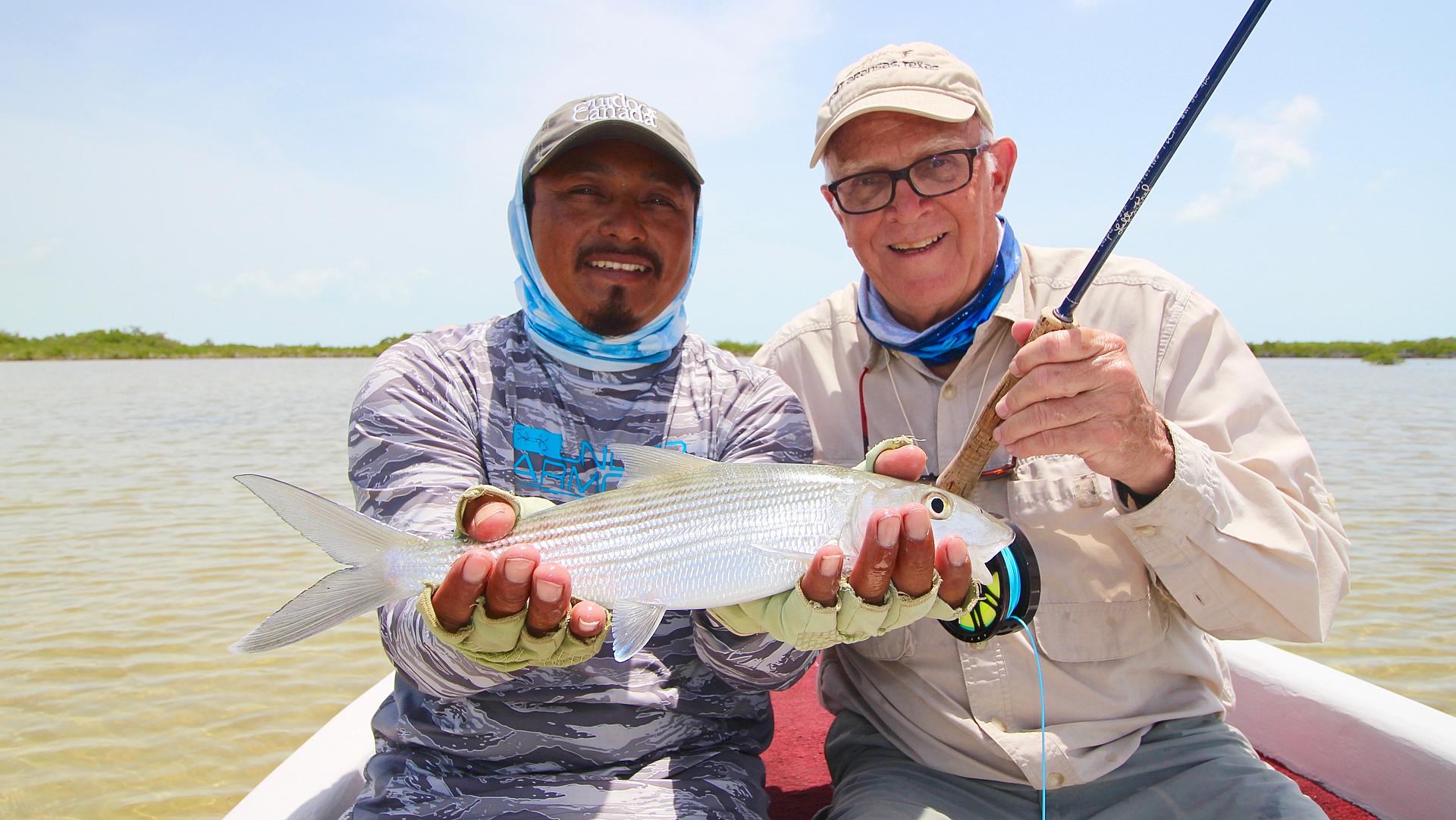Sea Change
Improve Your Fly Fishing with a Few Lessons from Saltwater Anglers
Advertisement
Famed American outdoor writer Kirk Deeter once remarked that “Fly fishing in freshwater and fly fishing in saltwater are essentially two different sports, played with the same basic equipment.” I’ve been lucky enough to do some saltwater fishing, and Deeter is right. On the ocean, longer casts are often required, the fish fight harder and it’s almost always windy. As I’ve learned new skills and techniques for saltwater fishing, however, my freshwater game has also improved. Here are a few lessons I brought home from the sea.
Improve Your Cast
I hate to say it, but it’s time we freshwater anglers learned to cast better. If you can thrash out 20 or 30 feet of line, you can catch a lot of fish on streams and ponds. But real saltwater guys, such as my 74-year-old friend Phil Shook, can throw accurate 60-foot casts with little apparent effort, and in any wind. That’s just what it takes to fish in the ocean.
Advertisement
As I prepped for saltwater by improving my own casting, I gained the skill—and confidence—to make more daring casts on my home waters. That included precisely working pocket water, casting into cover, casting in cross- and headwinds and more. If you’re struggling, you’ll be amazed at what a lesson or two and some regular practice can accomplish.
Brave the Wind
Looking back, I shudder to think of the experiences I lost out on because of all the days I decided it was too windy to fly fish. On the ocean, though, if you wait for light winds, you’ll never leave the dock. So, how do saltwater anglers handle it? As I said, they cast better. There are also wind-beating tactics such as adjusting your casting plane or fishing your backcast. Plus, you can position yourself or your boat so the wind is more favourable. The lesson here? If you want to fly fish on a windy day, you can almost always find a way.
Embrace the Sink
When it comes to depth control, saltwater anglers are extremely savvy in their use of full- and intermediate-sinking fly lines. In Canada, using full-sink lines for fishing lakes or deep holes in big rivers is nothing new. But on the ocean, I’ve used a full-sink line in four feet of water to get big flies down quickly through a chop. I’ve also fished knee-deep water with intermediate lines to quickly get a fly in the strike zone when spot casting into shoreline cover.
Advertisement

These tactics revealed a lot of domestic possibilities, so now I always carry a sinking line on a spare spool (or at least some sinking leaders). That way, I’m ready to precisely drift an emerger fly six inches below the surface, or swim a streamer just above a submerged weedbed. Changing flies takes a minute or two, and we do it all the time. So why not swap out your fly line? It only takes about five minutes, and depth control is often more important than the fly pattern. Also, a sinking line casts better than a floating line with splitshot on it, especially in the wind.
Use More Chartreuse
Saltwater fly flingers straight-up love chartreuse, and a Lefty’s Deceiver or Clouser Deep Minnow in that colour are the world’s go-to ocean flies. For the past few years, they’ve also been my best pike, smallmouth and walleye flies. In fact, I now tie all my bass and pike flies on saltwater-quality hooks, so I can use them anywhere I go. And my top trout streamer is now a simple chartreuse-and-white bucktail with a little flash.
Advertisement
A chartreuse fly is easy to see in the water, which helps you fish it better. And for whatever reason, chartreuse is just a great fish-catching colour. Most spin anglers would never leave home without some day-glow jigs or crankbaits, but the lesson seems to have been lost on freshwater fly anglers, whose streamer boxes are still dominated by earth tones.
I’m gradually paring down my streamer collection to a daring tricolour scheme of just white, dark and chartreuse flies. I still feel well equipped and, as a side benefit, suffer less option-overload when selecting a pattern. In fact, this exemplifies another great lesson from my saltwater friends: Keep your fly fishing as simple as possible.
For a series of techniques to practise fly casting, check out www.outdoorcanada.ca/practisecasting.

